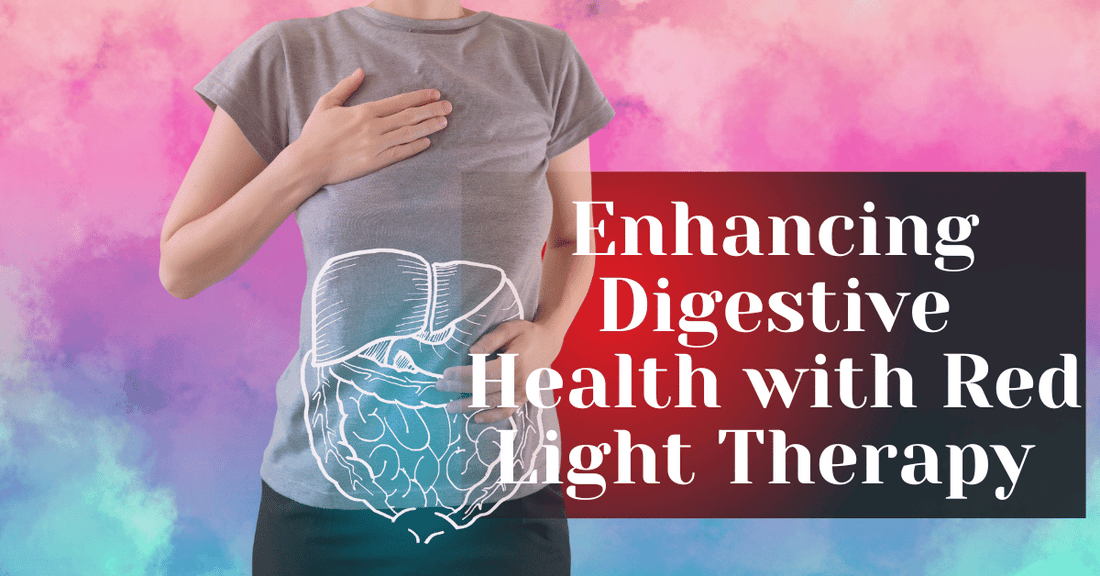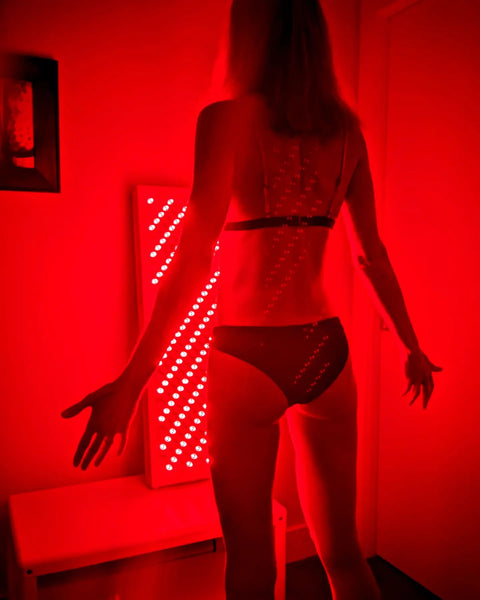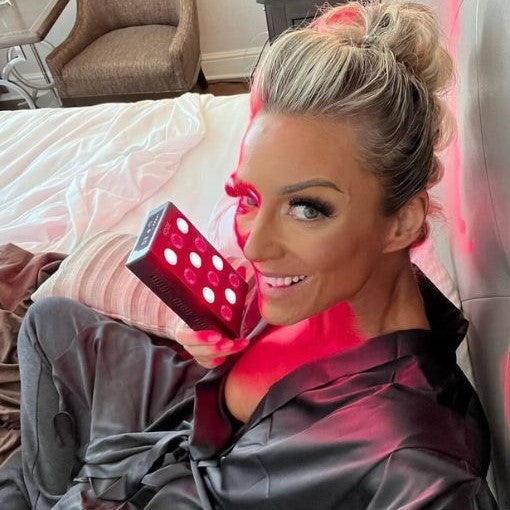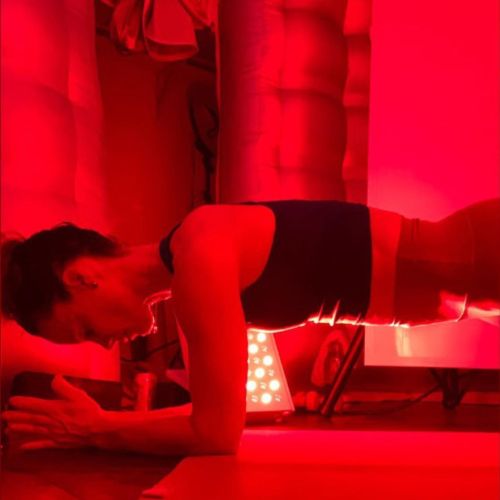
Enhancing Digestive Health with Red Light Therapy
Enhancing Digestive Health with Red Light Therapy
Enhancing digestive health through red light therapy is gaining traction as a promising approach to support a healthy gut and improve overall health. This therapy for digestive health utilizes red and near-infrared light to penetrate the tissues of the digestive system, potentially benefiting the gut microbiome by promoting the growth of beneficial gut bacteria.
Research indicates that red light therapy may help reduce inflammation in the gut, which is crucial for individuals suffering from conditions like irritable bowel syndrome and inflammatory bowel disease. By improving gut health, this therapy can also support the immune system and alleviate symptoms associated with poor gut health, such as leaky gut and various digestive issues.
The benefits of red light therapy extend beyond immediate relief; studies suggest that light therapy may enhance gut health over time by fostering a healthy gut microbiome. The use of red light can stimulate and support the digestive tract, leading to improved nutrient absorption and overall well-being.
As practitioners explore the levels of red and near-infrared wavelengths, the therapeutic potential of light exposure continues to unfold. For those seeking an alternative method to support digestive health, integrating a red light therapy device into their routine may present a valuable opportunity to improve gut function and enhance quality of life.
How Red Light Therapy Benefits Digestive Health
The Science Behind Red Light Therapy and Digestive Health
Red light therapy (RLT) has shown potential in enhancing digestive health through various mechanisms. Here’s a deeper look at how RLT benefits digestive health:
Cellular Repair and Regeneration

How RLT Stimulates Cellular Repair
Red light therapy promotes cellular repair and regeneration by enhancing mitochondrial function. Mitochondria, the powerhouse of cells, produce ATP, which is essential for energy and repair processes. By increasing ATP production, RLT accelerates the healing of damaged tissues, including those in the digestive system.
- Gut Lining Repair: The epithelial cells lining the gut are crucial for proper digestion and nutrient absorption. Light energy therapy supports gut health and helps in repairing these cells, which is beneficial for conditions like leaky gut syndrome.
- Tissue Regeneration: RLT supports the regeneration of tissues in the digestive tract, helping to restore function and integrity.
Reducing Inflammation

Role of RLT in Reducing Gastrointestinal Inflammation
Inflammation plays a significant role in many digestive disorders, including inflammatory bowel disease (IBD) and gastritis. Red light therapy has been shown to help reduce inflammation by:
- Decreasing Pro-Inflammatory Cytokines: RLT lowers the levels of inflammatory cytokines, which can reduce inflammation in the gastrointestinal tract.
- Reducing Oxidative Stress: By decreasing oxidative stress, RLT helps mitigate the damage caused by free radicals, which contributes to inflammation.
Table: Inflammatory Conditions and RLT Benefits
| Condition | RLT Benefit |
|---|---|
| Irritable Bowel Syndrome (IBS) | Reduces pain and discomfort |
| Inflammatory Bowel Disease (IBD) | Alleviates inflammation and healing |
| Gastritis | Eases inflammation and promotes healing |
Improving Blood Circulation

Connection Between Circulation and Digestion
Improved blood circulation is vital for effective digestion and overall gut health. RLT enhances microcirculation by:
- Stimulating Nitric Oxide Production: Near-infrared light to stimulate an increase of the production of nitric oxide, which helps dilate blood vessels and improve blood flow to the digestive organs.
- Enhancing Nutrient Delivery: Better circulation ensures that nutrients are efficiently delivered to the cells in the digestive tract, supporting optimal function.
Balancing Gut Microbiota

Influence of Red light therapy for Gut health
A healthy balance of digestive microbiota is crucial for the health of the gut. Low levels of red light therapy can be used to impact gut bacteria by:
- Promoting Beneficial Bacteria: RLT might help support the growth of beneficial gut bacteria, improving digestion and overall gut health. helps correct imbalances in the gut microbiome.
- Reducing Harmful Bacteria: By reducing inflammation and oxidative stress, RLT can help create an environment that is less conducive to harmful bacteria.
Conditions and Symptoms That Can Benefit from Red Light Therapy
Digestive Conditions Improved by Red Light Therapy
Red light therapy shows promise in alleviating symptoms and improving conditions related to digestive health. Here’s how RLT can support the gut and benefit specific digestive issues:
Irritable Bowel Syndrome (IBS)

How RLT Can Alleviate IBS Symptoms
Irritable Bowel Syndrome (IBS) is a common gastrointestinal disorder characterized by symptoms such as abdominal pain, bloating, and irregular bowel movements. Nir light therapy can help manage these symptoms by:
- Reducing Abdominal Pain: RLT's anti-inflammatory effects can help decrease pain and discomfort associated with IBS.
- Improving Bowel Regularity: By promoting gut health and reducing inflammation, RLT can lead to more regular bowel movements.
Inflammatory Bowel Disease (IBD)

Benefits of RLT for Crohn’s Disease and Ulcerative Colitis
Inflammatory Bowel Disease (IBD), including Crohn’s disease and ulcerative colitis, involves chronic inflammation of the digestive tract. Red light therapy offers several benefits:
- Alleviates Inflammation: RLT helps reduce the inflammation in the intestines, which can lead to symptom relief.
- Supports Tissue Healing: Accelerates the repair of damaged tissues in the digestive tract, aiding in the management of flare-ups and promoting overall gut health.
Gastritis and Ulcer

How RLT Helps Heal Gastritis and Ulcers
Gastritis, an inflammation of the stomach lining, and peptic ulcers can cause significant discomfort and digestive issues. RLT assists in:
- Healing the Stomach Lining: By stimulating cellular repair and reducing inflammation, RLT can help heal the lining of the stomach.
- Reducing Pain and Discomfort: Eases pain associated with ulcers and gastritis, improving quality of life.
Leaky Gut Syndrome

Impact of RLT on Gut Permeability
Leaky Gut Syndrome involves increased intestinal permeability, allowing harmful substances to enter the bloodstream. Red light therapy can improve gut health by:
- Strengthening the Gut Barrier: RLT promotes the repair of the gut lining, reducing permeability and supporting a healthier gut barrier.
- Reducing Inflammation: Helps decrease inflammation, which is often associated with leaky gut.
Constipation and Bloating

Relief Mechanisms Provided by RLT
Constipation and bloating are common digestive issues that can be improved with RLT:
- Improving Motility: RLT may help enhance gut motility, leading to more regular bowel movements and reduced constipation.
- Alleviating Bloating: By reducing inflammation and improving circulation, RLT can help alleviate bloating and discomfort.
Table: Digestive Conditions and RLT Benefits
| Condition | RLT Benefit |
|---|---|
| Irritable Bowel Syndrome (IBS) | Reduces abdominal pain and improves bowel regularity |
| Inflammatory Bowel Disease (IBD) | Alleviates inflammation and supports tissue healing |
| Gastritis and Ulcers | Promotes healing of the stomach lining and reduces pain |
| Leaky Gut Syndrome | Strengthens the gut barrier and reduces permeability |
| Constipation and Bloating | Enhances gut motility and alleviates bloating |
How to Use Red Light Therapy for Digestive Health
Choosing the Right Red Light Therapy Device
To effectively use red light therapy (RLT) for digestive health, selecting the appropriate device is crucial. Here’s what you need to consider:
Types of RLT Devices
KOZE™ Mini
Usage: Ideal for targeting specific areas or localized treatment.
Advantages: Portable and easy to use.
Examples: Handheld wands and portable lamps.
KOZE X Series (Black)
Usage: Suitable for covering larger areas, such as the abdomen.
Advantages: Provides more extensive coverage and can treat multiple areas simultaneously.
Examples: Light panels and large LED arrays.
KOZE X Series - 4X (White)
Usage: Used for full-body treatments.
Advantages: Offers comprehensive treatment for overall wellness.
Examples: Red light therapy beds and full-body lamps.
Selecting the Right Wavelengths of Light
Different wavelengths penetrate the skin to varying depths. For digestive health, consider the following wavelengths:
- 600-650 nm: Targets the skin and superficial tissues, beneficial for healing and anti-aging.
- 650-700 nm: Penetrates deeper tissues, useful for reducing inflammation and enhancing blood flow.
- 700-800 nm: Reaches even deeper, impacting muscles and joints, and supporting overall gut health.
- 800-900 nm: Ideal for deep tissue repair and improving overall circulation.
Table: Wavelengths and Their Applications
| Wavelength (nm) | Depth of Penetration | Suitable For |
|---|---|---|
| 600-650 | 1-2 mm | Skin rejuvenation, surface healing |
| 650-700 | 2-5 mm | Inflammation reduction, tissue repair |
| 700-800 | 5-10 mm | Muscle recovery, deep tissue healing |
| 800-900 | 10-20 mm | Deep tissue repair, joint health |
Recommended RLT Protocols for Digestive Health
Treatment Duration and Frequency
For optimal results, follow these guidelines for RLT sessions:
- Session Duration: Typically, sessions last between 10 to 20 minutes.
- Frequency: Aim for 3 to 5 sessions per week. Adjust based on individual needs and response.
Application Areas
Focus on these areas for digestive health:
- Abdominal Region: Apply RLT to the stomach and lower abdomen to target gut issues.
- Lower Back: Treat the lower back area to support overall digestive function.
Best Practices for Effective Use
- Consistency: Regular sessions yield better results. Maintain a consistent schedule.
- Distance: Position the device at the recommended distance from the skin, usually 6 to 12 inches, as specified by the device manufacturer.
- Timing: Use RLT at a time when you can relax and ensure no interruptions during the session.
Tips for Using RLT Safely and Effectively
- Follow Manufacturer Instructions: Always adhere to the guidelines provided by the device manufacturer for safe and effective use.
- Monitor Skin Response: Watch for any signs of irritation or discomfort. If experienced, reduce the frequency or duration of sessions.
- Combine with Other Therapies: RLT can complement other treatments, such as dietary changes or medication, for comprehensive digestive health management.
This case highlights the potential effectiveness of RLT in managing IBS symptoms and improving digestive health.
Conclusion
Recap of Red Light Therapy Benefits for Digestive Health
Red light therapy (RLT) offers a promising approach to enhancing digestive health through its various mechanisms. By stimulating cellular repair, reducing inflammation, improving blood circulation, and supporting a balanced gut microbiota, RLT can help manage and alleviate several digestive conditions.
Key Benefits:
- Cellular Repair: Accelerates the healing of gut tissues and supports overall digestive function.
- Inflammation Reduction: Eases symptoms associated with conditions like IBS and IBD.
- Improved Circulation: Enhances nutrient delivery and supports overall gut health.
- Gut Health: May positively influence gut microbiota and strengthen the gut barrier.
Practical Considerations for Using RLT
To effectively incorporate red light therapy into your wellness routine, consider the following:
- Device Selection: Choose a device that suits your needs, whether it’s handheld, a panel, or a full-body light bed.
- Treatment Protocol: Follow recommended session durations and frequencies for optimal results.
- Safety and Efficacy: Adhere to manufacturer instructions and monitor your response to ensure safe and effective use.
Encouragement to Explore RLT
If you’re struggling with digestive issues or looking to enhance your overall gut health, red light therapy presents a non-invasive and potentially effective option. With its growing body of research and positive anecdotal evidence, RLT could be a valuable addition to your health regimen.
Final Thoughts
As with any therapeutic approach, individual responses to RLT may vary. It’s advisable to consult with a healthcare professional before starting any new treatment, particularly if you have underlying health conditions or are on medication.
Embrace the potential of red light therapy as part of a holistic approach to digestive health, and explore how it might contribute to your overall well-being.




